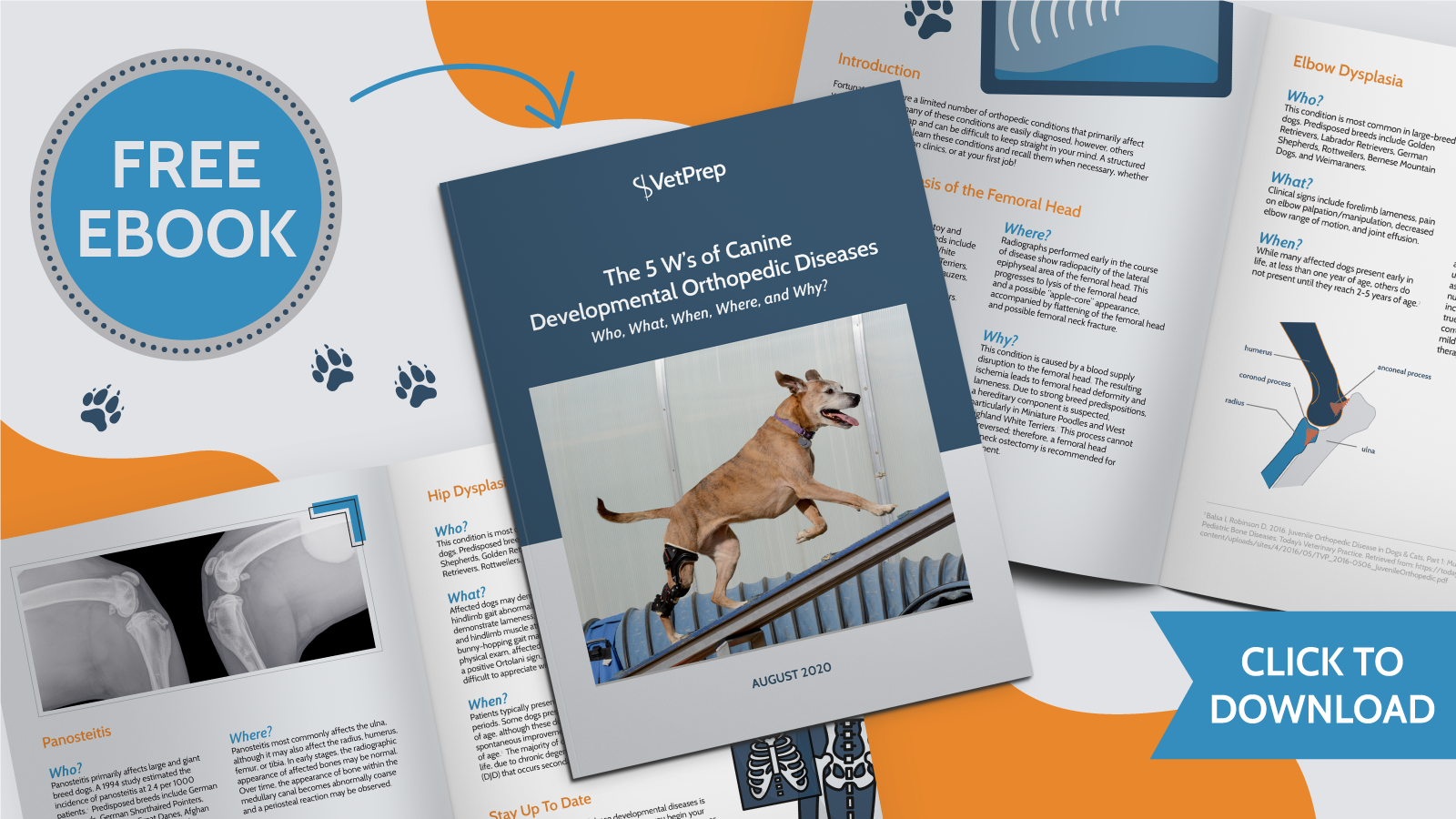
While radiographic interpretation is an important component of veterinary practice, all of the radiographic interpretation skills in the world are useless if you can’t create a diagnostic image!
If you’re lucky, your first job will include a top-notch team of vet techs who can create a variety of excellent images for you. Just in case that doesn’t happen, though, it’s important to be prepared for the possibility that you may be the one who is training your vet assistants or perhaps even taking radiographs yourself!
1. Focus on safety
Remember the basic principle of radiation safety: ALARA, or “as low as reasonably achievable.” It’s important to minimize radiation exposure to yourself and your team. In order to do that, remember these fundamental components of radiation safety:
- Use dosimeters properly.
- Wear appropriate shielding, including aprons, thyroid shields, and gloves.
- Collimate your beam to reduce scatter.
- Limit your exposure time by minimizing retakes.
- Increase your distance from the primary beam when possible.
2. Consider Sedation
Sedating your patients prior to taking radiographs offers a number of benefits for you, your team, and your patients. First, a sedated pet is easier to position for a diagnostic radiograph. This improves your likelihood of obtaining an accurate diagnosis. Second, sedation minimizes radiation risks to your time. If you obtain a diagnostic radiograph on the first attempt, there’s no need for retakes. Additionally, sedation can allow your team members to position themselves farther from the primary beam. With the use of wedges, sandbags, and tie-downs, your team members may not even need to have their hands on the patient.
3. Measure carefully
With digital radiography, many adjustments can be made within the computer. While this means that digital radiography is more forgiving than film radiography, it’s important to still pay careful attention to your technique.
Most x-ray machines allow you to make two adjustments: the kVp and the mAs. The kVp is the kilovoltage peak, or the peak electric potential applied to the x-ray tube. The mAs stands for milliampere-seconds, which is the product of radiation produced and exposure time.
Your hospital’s technique chart (which has been created for your particular x-ray machine) should indicate the correct technique (kVp and mAs) to use for a given body part of a given thickness. In order for this chart to be helpful, though, it’s important to measure carefully and accurately! When measuring the thorax or abdomen, be sure to measure the widest part of the thorax or abdomen.
4. Follow the technique chart, but make adjustments if necessary
A good technique chart should result in high-quality images that are properly exposed. Over time, though, x-ray machines can undergo changes that make the technique chart less accurate.

If the image that you created with the technique chart is improperly exposed and cannot be corrected within the computer, try making the following adjustments:
- Image underexposed: increase kVp by 10% or double the mAs
- Image overexposed: decrease kVp by 10% or half the mAs
In some cases, it may be necessary to create a new technique chart to reflect these changes.
5. Pay attention to positioning
Perfect technique and the highest-quality equipment is useless if your positioning is not ideal. Give clear directions to your vet techs on how to position the patient for an optimal radiograph.
Consider the following guidelines:
- Center the image on your area of interest.
- Don’t collimate too small: make sure not to crop out the thoracic inlet on thoracic views!
- When taking limb radiographs, the limb of interest should be down (closest to the film).
- When taking abdominal radiographs, the cranial edge of the image should be 2 finger widths cranial to the xiphoid process and the caudal edge should be at the greater trochanter of the femur.
Poor positioning is a common reason for retakes, which increases radiation exposure and costs the clinic money. It pays to focus on getting the pet positioned correctly the first time.
Taking the time to implement these tips and think consciously about radiology can provide benefits for you, your patients, and your team!



